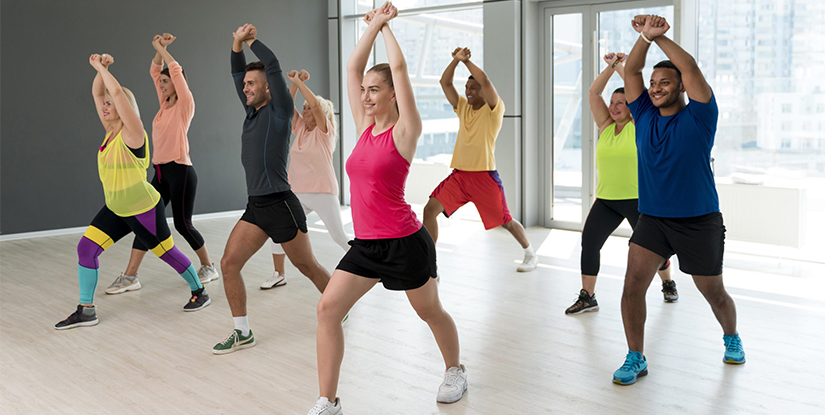How Is Defining Physical Fitness Measured Across Health, Performance, and Longevity?

What does defining physical fitness really mean in practice?
Defining physical fitness is more than a single number or a momentary performance. It’s a multi-dimensional construct that reflects how well your body can perform daily tasks, how efficiently your systems operate, and how you adapt to stress over time. In practical terms, defining physical fitness involves understanding both the components you train and the metrics you use to monitor progress. This section lays the groundwork for a clear, actionable framework you can apply whether you are new to training or optimizing an advanced program.
First, it’s essential to distinguish three related but distinct ideas: health, fitness, and performance. Health refers to the absence of disease and the maintenance of bodily systems (cardiovascular, metabolic, musculoskeletal) in a functioning state. Fitness is a composite of capabilities that enable you to perform tasks and activities efficiently, often through measurable attributes such as strength, endurance, flexibility, and body composition. Performance focuses on how well you execute specific tasks, like sprinting, lifting a particular weight, or completing a chosen event. When you combine these concepts, defining physical fitness becomes a practical map: which abilities matter most for your life and how you will improve them over time. In real-world terms, defining physical fitness encompasses five core components that commonly appear in health guidance and professional coaching: cardiorespiratory endurance, muscular strength and endurance, flexibility and mobility, body composition, and motor skills/functional movement. Each component contributes to daily function (carrying groceries, climbing stairs, tying shoes) and to long-term outcomes (reduced risk of chronic disease, better glucose control, independent mobility in aging). A robust plan addresses all five while recognizing your personal context—age, training history, injuries, schedule, and preferences. The objective is not perfection in every metric at once, but consistent improvement across meaningful domains that align with your goals. To operationalize these ideas, you’ll adopt a framework that translates abstract definitions into practical tests and training choices. Start with baseline assessments that require minimal equipment, establish a target for each domain, and then create a progression plan that uses progressive overload, varied modalities, and real-world applications. The result is a formula you can repeat quarterly or semi-annually to track progress, recalibrate priorities, and prevent plateaus.
Defining terms: fitness, health, and performance
Defining physical fitness begins with precise terms. Fitness is the capacity to perform physical tasks with efficiency and resilience. Health concerns how well your body systems function and recover, including metabolic, cardiovascular, and musculoskeletal health. Performance refers to output in a specific domain, such as strength, speed, or endurance in a sport or activity. When you frame your goals around daily life, longevity, and personal preferences, you’ll often see a balance emerge: you train for health to support function, you optimize fitness across domains to enhance performance, and you tailor strategies to achieve outcomes you value most.
Practical takeaway: start with where you want to be in daily life. If your aim is to carry groceries without fatigue, climb stairs comfortably, and stay independent with aging, you’ll orient your plan toward all five components with an emphasis on sustainable habit formation rather than extreme short-term gains.
The five core components of physical fitness
The most consistently cited framework identifies five domains: 1) Cardiorespiratory endurance (aerobic capacity), 2) Muscular strength and endurance, 3) Flexibility and mobility, 4) Body composition, and 5) Skill and functional movement. Each domain contributes to different types of tasks and has distinct training methods.
- Cardiorespiratory endurance: activities such as brisk walking, cycling, running, or swimming that elevate heart rate and improve the body’s ability to transport oxygen.
- Muscular strength and endurance: resistance training that increases the amount of force your muscles can produce and how long they can sustain activity.
- Flexibility and mobility: joint range of motion and the ability to move through it with control; essential for injury prevention and efficient movement patterns.
- Body composition: the relative proportions of lean tissue and fat; a leaner, functionally favorable composition often supports metabolic health and performance.
- Skill and functional movement: coordination, balance, agility, and neuromuscular efficiency that translate to everyday tasks and sport-specific actions.
In practice, you don’t need to master all five domains simultaneously. A balanced plan prioritizes two to three areas aligned with your goals and life context, while ensuring maintenance or slow progression in others to preserve overall health and resilience.
How to measure these components in daily life
Measurement should be practical, repeatable, and informative. Start with simple, repeatable tests that you can perform every 6–8 weeks to track change without equipment. Examples include:
- Cardiorespiratory: a two-mile walk or 12-minute Cooper test, noting pace or distance and recovery time.
- Strength: a 1-repetition maximum for major lifts (bench press, squat) or a submaximal test like a rep-max to failure (e.g., how many push-ups or goblet squats you can perform in 60 seconds).
- Endurance: a timed circuit (e.g., AMRAP in 10 minutes) to monitor work capacity and completion quality.
- Mobility: A basic mobility screen (ankle dorsiflexion, hip hinge, shoulder reach) to identify stiffness that might limit function.
- Body composition and health markers: waist circumference, resting heart rate, and, when available, fasting glucose or lipid panels.
Practical tip: record your numbers in a simple notebook or app, note contextual factors (sleep, stress, nutrition), and compare progress across similar conditions (same time of day, similar meals). This approach helps you spot trends rather than noise and keeps motivation high by showing tangible gains.

